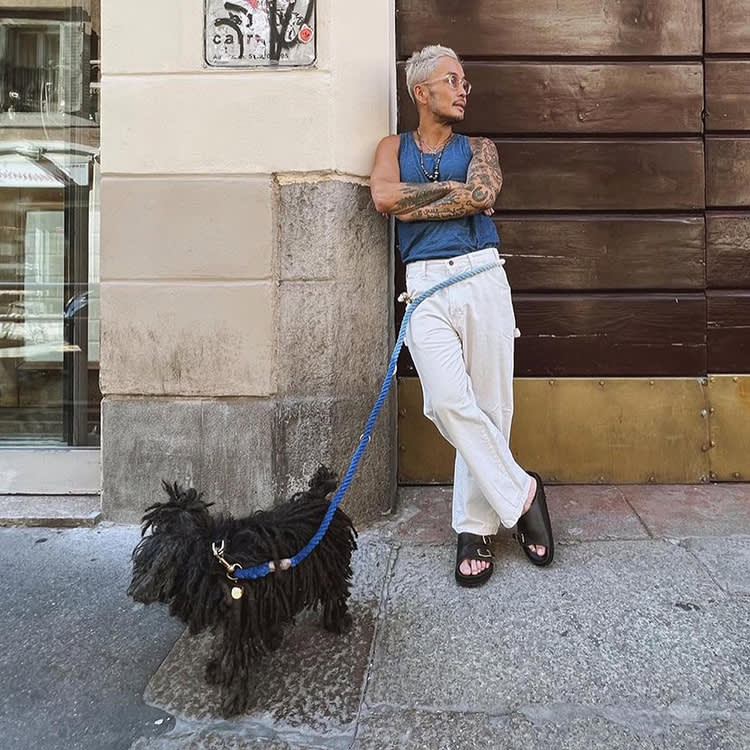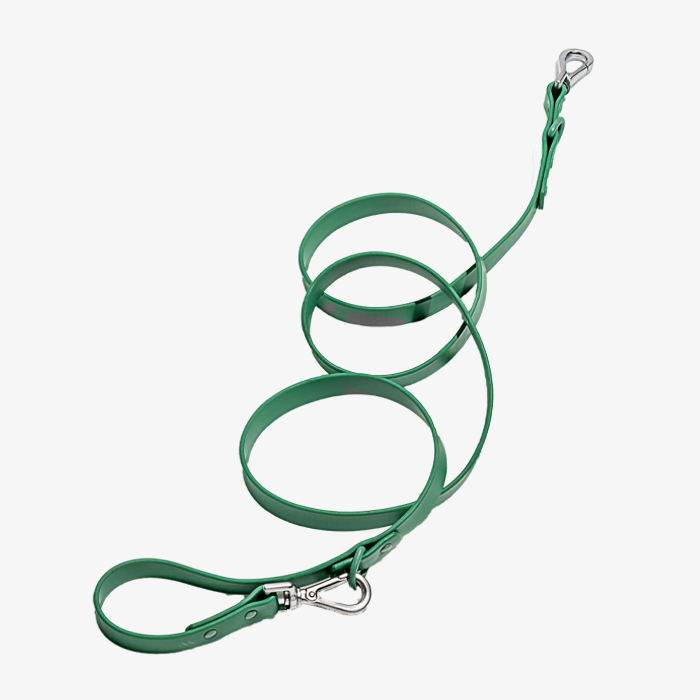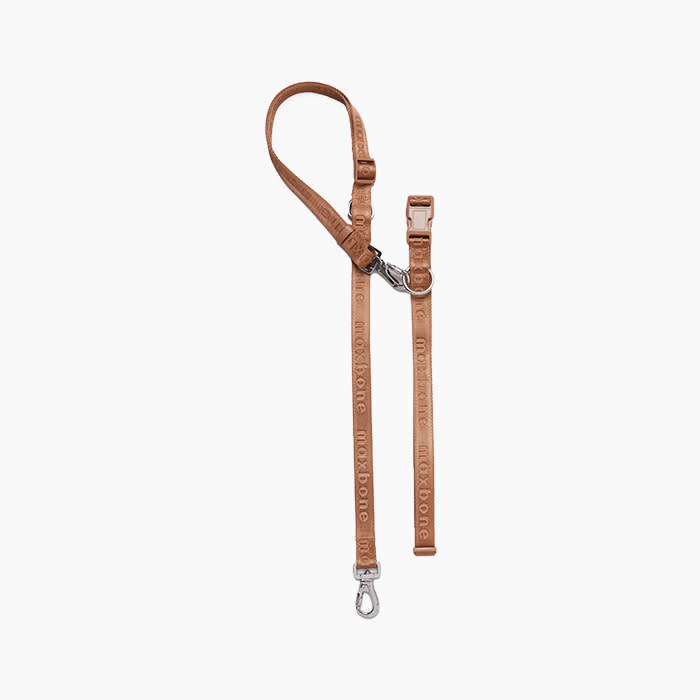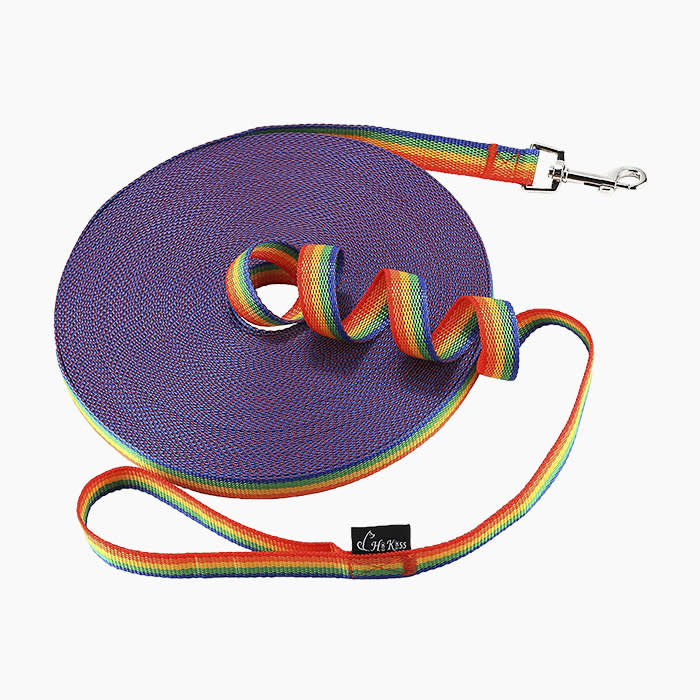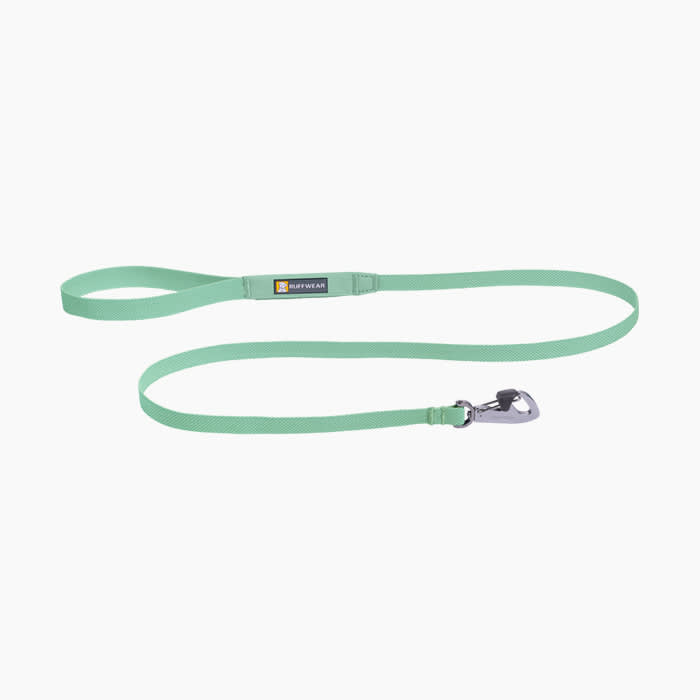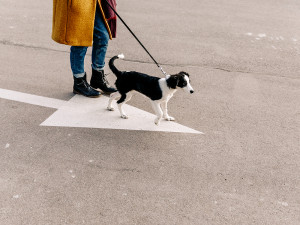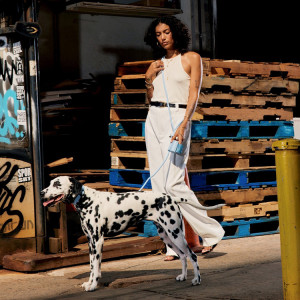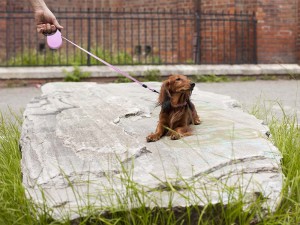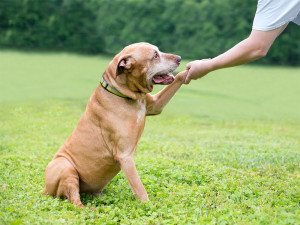6 Leads That Check Every Box On the Experts’ List
The dog leads recommended by experts based on their very specific criteria
Whether you’re adopting a new pup or outfitting your dog in the latest and greatest in pet fashions, there are endless options when it comes to kitting them out. Choosing a lead is no exception. Beyond just finding a lead that’s stylish and durable that dog doesn’t totally despise, there are a lot of other factors to consider, including your pet’s lifestyle, size, weight and level of reactivity.
Vera Murri, of physical and virtual training schools DogLife Hobokenopens in new tab and Dogs Life Incopens in new tab, emphasises that a lead isn’t a replacement for proper training. “They’re not born knowing what the lead is, what the harness is,” she says. “We have a lot of expectations for our dogs.”
If you’re just getting started, veterinarian and The Wildest Collective member Dr John Iovinoopens in new tab recommends “matching the size with the dog” when selecting the length of a lead. This becomes particularly important when introducing your pup to strangers, other animals or new surroundings. It’s not about controlling the dog; it’s about “teaching them how to switch attention from the trigger back to the handle,” Murri adds.
While trainers and veterinarians may have varying opinions about the safety of certain lengths and materials based on their own experiences, we spoke with a few to get a well-rounded understanding of what to look for. No one wants to browse 10 pages of options anyways, right? We covered the best leads for chewers and pullers, seniors and adolescents, and big and small dogs. Below, everything you need to know about finding the right lead for your dog (before you make an impulse purchase on Amazon).
Btw, our editors (and their pets) picked out these products. They’re always in stock at the time we publish, but there’s a chance they’ll sell out. If you do buy through our links, we may earn a commission. (We’ve got a lot of toys to buy over here, you know?)
Safety
The goal of lead training a dog is to be able to walk without any tension at either end of the lead. Training plays a huge part in your dog’s comfort on a lead, but the best are designed to be pet and human safe. The veterinarians and trainers we spoke to clued us in to the most unpopular lead among them: retractable leads. “Retractable leads aren’t heavily in favour. If you have a dog that you’re doing work with, and you want them to heel properly or walk properly, it’s just going to be more difficult to execute that,” says Dr Iovino.
Beyond making executing commands more difficult for both dog and dog parent, retractable leads also have a reputation for being dangerous. “I tend to suggest avoiding retractable leads,” says Annie Grossman, a professional dog trainer, and the owner and co-founder of School For The Dogsopens in new tab. “If dropped, they can snap towards a dog, which can be both dangerous and scary.” Not only can they frighten noise-sensitive pups, and cause them to run from the heavy plastic handle, but they’re also a danger to humans. “Whenever I see a retractable lead on someone’s hallway table, I tell them to throw it out,” says Murri. “If you just Google ‘injuries retractable leads’, you will see a lot of different stories.”
Size and fit
The greatest indicator of safety and comfort is going to be size and fit. “For your average walking scenario, what you want is just a short, durable lead that isn’t too long, but isn’t too short,” Dr Iovino advises. “The going length is 4 to 6 feet (122 to 183 centimetres).” Aside from length, you should also be aware of width and weight specifications. A tiny Terrier won’t be able to tolerate as heavy of a lead as a Doberman. “I also see people using leads that are a little too heavy for their very young and small puppies,” Murri says. She recommends using a carabiner on the smaller side, “especially if you have a puppy under 10 pounds (4.5 kilograms).”
For larger dogs, the opposite issue presents itself. Without a heavy enough lead, bigger dogs can easily pull a lightweight lead out of your hand, even if they aren’t a tugger. Murri recommends a 2.5 centimetre-thick lead for dogs that are bigger than 9 kilograms.
A lead’s clasp is just as important as its dimensions and weight. Grossman prefers a trigger snap: “It has more overlap and is therefore safer than a simple pull-back clasp.”
Durability and materials
While you likely won’t need anything stronger than nylon for the average dog, Grossman is partial to Mendota braided leads made from polypropylene – an even stronger synthetic plastic: “They’re very sturdy, but not heavy.”
If your dog is a chewer, you’d be better suited with a leather or leather-alternative lead. Or, Grossman offers, “You can attach a simple chain between the end of your lead and the dog’s collar if you have a dog who bites a lead.”
